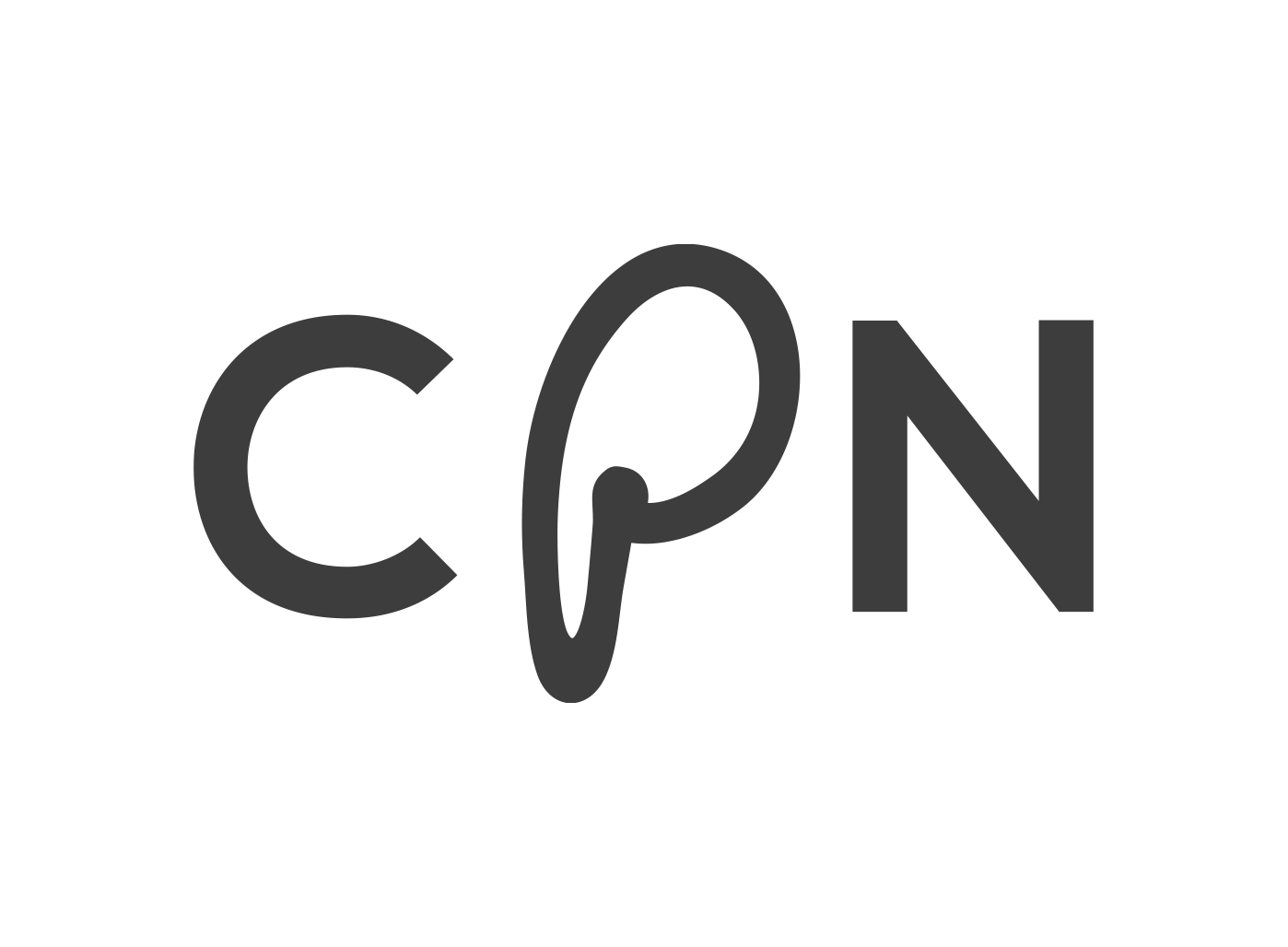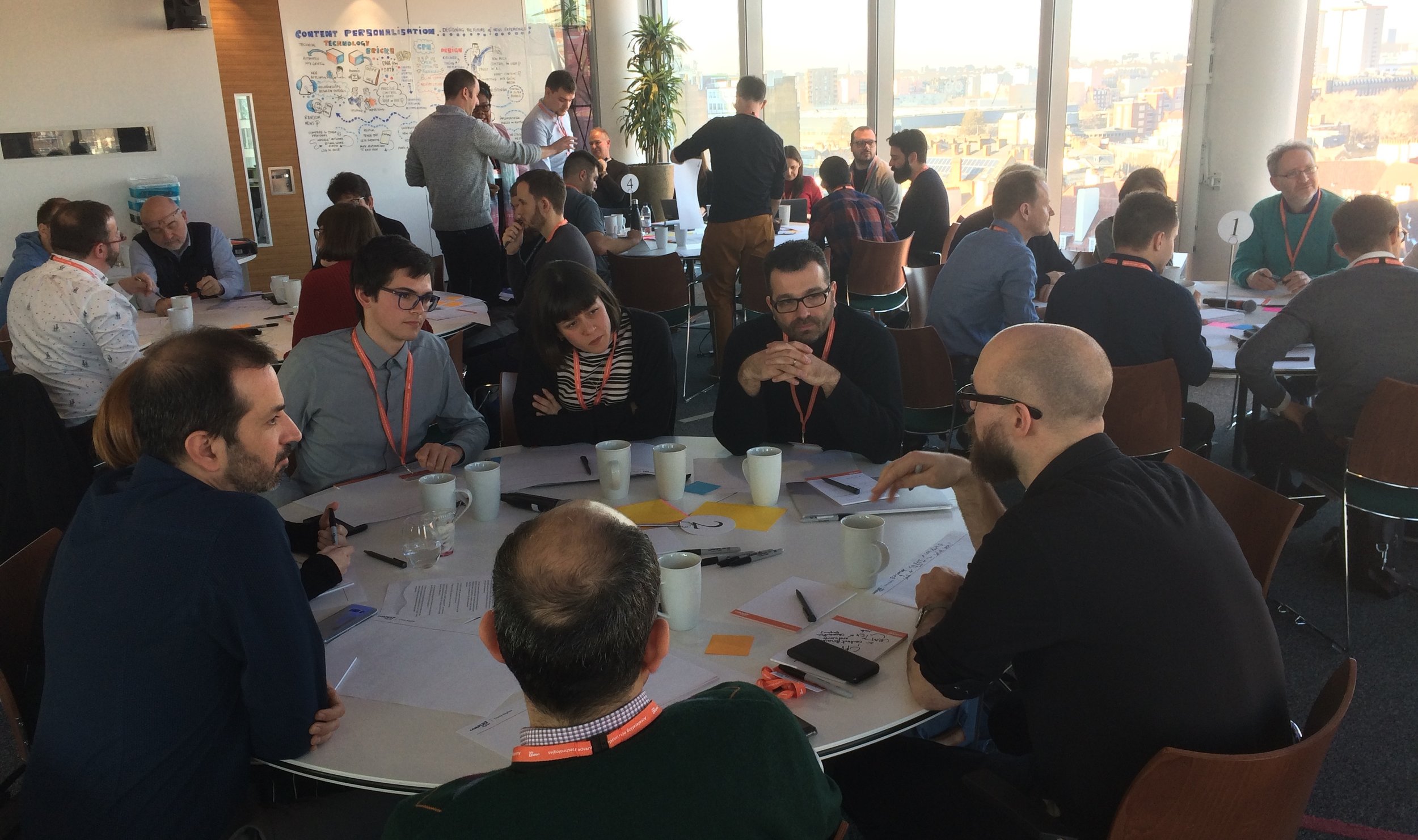From idea to concept: report from the CPN hackathon
/The CPN hackathon gave tech and media companies the opportunity to learn about the CPN personalisation platform, and allowed them to kick-start their own collaborations that aim to build cutting-edge personalisation tools.
A broad range of tech and media professionals participated in the CPN hackathon in London on 13 and 14 February, hosted by Digital Catapult.
During two intense days, the hackathon participants learned about the CPN project and the technical architecture of the CPN recommender, and were able to participate in broader discussions about how news publishers could benefit from personalisation.
The event was also a chance for the participating media and tech companies to tackle news personalisation head-on: the participants started new collaborations with the aim of creating personalisation solutions that build on the CPN platform.
Six personalisation projects were launched at the hackathon. Over the next months the project teams will continue to develop their ideas further, with the aim of showcasing their solutions at the annual World News Media Congress, organised by WAN-IFRA in Glasgow in June.
Update: Read more about the six personalisation projects in the take away pack from the hackathon.
The CPN Hackathon is starting in London, hosted by @DigiCatapult! Today and tomorrow media and tech companies will learn about the CPN news recommender platform, and will work together to develop new #personalisation tools. pic.twitter.com/hFFhLyesae
— projectCPN (@project_cpn) February 13, 2019
Day one: benefits of personalisation
Setting the scene for the event, Tilman Wagner, Innovation Manager at Deutsche Welle, started the hackathon by presenting the CPN project, its achievements so far, and the road ahead. While the first CPN prototype, created for desktop use, has already been tested during a pilot, the next step is developing a mobile version of the platform. (Read more about the first CPN prototype here.)
What is CPN? @twone2 is discussing the challenges of #news #personalisation, what the CPN project has done so far, and how our platform aims to connect the right content with the right user. pic.twitter.com/qTvDk8g0LZ
— projectCPN (@project_cpn) February 13, 2019
But why exactly should the news media care about personalisation? Titus Plattner, Senior Innovation Project Manager at Tamedia, offered a compelling argument by referring to his own company: the Swiss publisher produces about 1000 news articles every day across its different publications – but the average user reads only 2,4 of those. It’s clear that those articles need to be relevant to the reader, he said. Plattner also gave an overview of the various personalisation efforts that newsrooms around the world are trying out today. (Read more in his blog post here.)
While tech giants obviously lead in terms of investing in algorithms and personalisation, Plattner said that news media companies have one important advantage: “Tech companies don’t want to care about the content that’s on their platforms. News media profoundly cares about content.” News publishers should therefore use algorithms to support their existing cultures, rather than focus on building fully automated tools.
Why should we personalise content? Because the average reader never sees the great majority of our articles, says @titusplattner. His piece summarises the different ways newspapers are already using #personalisation
— projectCPN (@project_cpn) February 13, 2019
➡️ https://t.co/y6OSqAK2CW pic.twitter.com/V6RbiqdznZ
To conclude the first day, the participants were asked to think about the ideal future for content personalisation. What would it look like for the customer? What would it require from media organisations? These reflections formed the basis for the collaborative projects that were defined further the next day.
What are the main challenges and opportunities in #personalisation? The Hackathon participants are brainstorming how personalised content could be used more effectively in the future. pic.twitter.com/kWumnlbdpV
— projectCPN (@project_cpn) February 13, 2019
Day two: working towards solutions
The second day started with a deep dive into the technical features of the CPN platform: Nikos Sarris from ATC Innovation Lab, Fulvio D’Antonio from LiveTech, and Ferdinando Bosco from Engineering discussed the intricacies of the technologies that power the CPN platform. (For detailed descriptions of the platform’s infrastructure, microservices and technology bricks, check out the project Deliverables.)
Kicking off day 2 of @project_cpn Hackathon - with technical insights by @nikossarris and a beautiful view over London. 📸 pic.twitter.com/3Nl04aBE1M
— DW Innovation (@dw_innovation) February 14, 2019
The majority of the day was dedicated to workshop sessions that allowed the participants to develop their collaborations further. What challenges prevent media companies from embracing personalisation? What ways are there around these challenges?
CPN Hackathon participants are workshopping ideas for new personalisation services. What are the main challenges for media companies with #content #personalisation? What opportunities are there to address these challenges? pic.twitter.com/n4WgkbETz9
— projectCPN (@project_cpn) February 14, 2019
Between workshop sessions, Olga Kisselmann, Innovation Manager at Deutsche Welle described how Germany’s public international broadcaster approaches personalisation. Given the range of its stakeholders and audiences, the company – which publishes content in 30 languages across 60 countries – takes a careful approach to new technologies. But Deutsche Welle believes that personalisation can increase content discovery from the company’s vast archives, and help it reach new audiences who might not be looking for news content specifically.
The day came to an end with the different groups presenting their ideas for news personalisation solutions. These varied greatly, from an automated content tagging solution to combining data from users’ social media accounts with data about their news consumption habits, and from taking on the filter bubble to incorporating a broad range of open-source data in the CPN personalisation algorithm.
The end of the CPN Hackathon is approaching: the groups are now presenting their ideas for new #news #personalisation solutions. pic.twitter.com/Oo7wmMYbgR
— projectCPN (@project_cpn) February 14, 2019
The teams will now continue refining these ideas and work towards creating services that enhance the CPN platform and that will be presented in June at the World News Media Congress in Glasgow.
We will soon share more details about the collaborations that were started at the Hackathon – stay tuned!
Exciting and challenging hackaton as @uhopper ambassador @DigiCatapult - designing the #futureofnews personalization together with @DeutscheWelle @vrtnws @Sigmalive_EN within the @project_cpn - credits to #scribeslike pic.twitter.com/H1ycjCkn47
— Elisa Tassoni (@tsslsse) February 14, 2019




